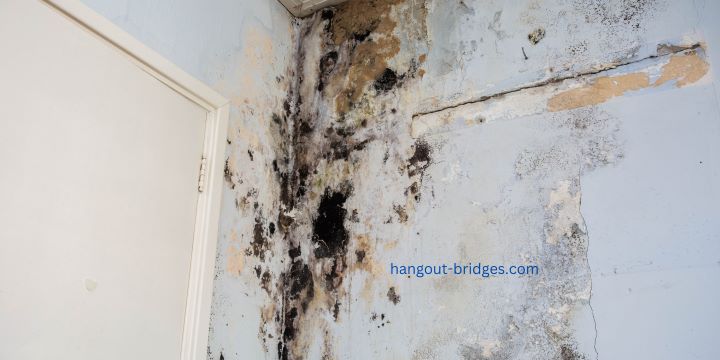Table of Contents
- Mold: What Is It?
- Causes of Mold Growth
- Signs You Have Mold
- Health Risks Associated with Mold
- Tips for Preventing Mold
- What to Do if You Find Mold
- Why Professional Mold Removal is Important
- Final Thoughts
Mold: What Is It?
Mold is a fungus that grows well in damp environments and may be found indoors and outdoors. It comprises multicellular filaments known as hyphae, which spread across surfaces to form visible colonies. While mold naturally breaks down organic materials in the environment, its presence inside homes can lead to various problems. If you suspect mold in your home, consider professional mold remediation in New Jersey to address the problem effectively.
Living with mold isn’t just unpleasant due to its appearance and odor; it’s also hazardous to inhabit a mold-infested home. Mold can trigger allergies, respiratory issues, and other health problems, posing a severe risk to those with pre-existing conditions like asthma. The potential consequences of unchecked mold growth motivate many homeowners to seek professional help promptly when faced with this issue.
Causes of Mold Growth
Overly damp surroundings are ideal for the growth of mold. Several things, such as leaky windows, pipes, roofs, and places with inadequate ventilation and excessive humidity, can contribute to this wetness. Even from minor leaks, water damage can create an ideal breeding ground for mold since it supports its growth by providing the necessary dampness. Additionally, steam from showers and cooking can accumulate in bathrooms and kitchens, further contributing to mold growth.
Poor ventilation exacerbates this issue by trapping moisture indoors, promoting mold proliferation. A lack of insulation can cause moisture, which eventually encourages mold growth. Therefore, it is essential to address underlying moisture problems to prevent mold from taking root in your home.
Signs You Have Mold
Detecting mold can be straightforward if you know what to look for. Visible mold is the most obvious indicator, often appearing as fuzzy or slimy patches that vary in color from black to green, white, or even orange. However, mold can also hide behind walls and under floors, making it difficult to spot. A musty odor is another telltale sign indicating the presence of mold, even if it is not visible. Discoloration on walls, ceilings, and floors may also point to a mold problem. Regularly inspecting potential problem areas can help catch mold early before it proliferates.
Additional signs include water stains or physical damage to building materials, such as peeling paint or wallpaper. Sometimes, unexplained allergic reactions among household members may signal mold presence. Recognizing these signs early is crucial for addressing mold issues before they become more significant and dangerous.
Health Risks Associated with Mold
Exposure to mold poses several health risks. Inhaled mold spores can cause respiratory problems, especially in those with asthma or other respiratory disorders. Mold exposure can aggravate allergies, causing symptoms including congestion, itching, and sneezing, according to the Centers for Disease Control and Prevention. In severe cases, prolonged mold exposure can lead to more significant health issues, such as lung or systemic fungal infections, especially in individuals with weakened immune systems.
Additionally, some molds produce mycotoxins—dangerous substances that can lead to toxic mold syndrome. This condition can cause symptoms ranging from cognitive dysfunction to chronic fatigue. Hence, taking mold-related health risks seriously is essential for safeguarding the well-being of household members.
Tips for Preventing Mold
- Fix leaks promptly to prevent moisture buildup. Even small drips can create a damp environment conducive to mold.
- Ensure proper ventilation in high-humidity areas like bathrooms and kitchens. Use exhaust fans to reduce moisture levels.
- Utilize dehumidifiers in damp basements. Keeping humidity levels below 60% deters mold growth.
- Regularly clean and dry areas prone to moisture, such as window sills and bathrooms. Ensure that spills or wet spills are promptly addressed and dried.
- Use mold-resistant paint in places like attics and basements where mold development is expected. These paints contain antimicrobial properties that help prevent mold formation.
What to Do if You Find Mold
If you discover mold in your home, it is crucial to address it immediately. As getting rid of the mold won’t prevent it from returning, you need first to locate and stop the source of the moisture. For small areas of mold, a mixture of water and detergent can be used for cleaning. Ensure that the cleaned area is thoroughly dried. However, suppose the mold infestation is significant or visible damage to your home’s structure. In that case, it may be advisable to seek professional help to remove all mold safely and effectively.
Be cautious when dealing with mold yourself. Wear protective gear, gloves, goggles, and an N95 respirator to minimize exposure. For larger infestations, professionals have the proper equipment and expertise to handle remediation safely.
Why Professional Mold Removal is Important
Professional mold removal services bring expertise and specialized equipment to eliminate mold from your home. According to an Environmental Protection Agency guide, professionals can ensure that all mold is removed safely and thoroughly, reducing the likelihood of recurrence. To provide a more comprehensive solution, they could address any underlying issues contributing to mold growth, such as leaks or insufficient ventilation.
Professionals are trained to handle hazardous materials safely, minimizing health risks during remediation. They can also conduct air quality tests to detect residual mold spores, ensuring your home is safe for re-occupancy.
Final Thoughts
Preventing mold in your home is about preserving the structure and protecting your health. You may lessen the likelihood of mold problems by being aware of the sources of mold, spotting the warning signs, and implementing preventative measures. If mold does develop, feel free to seek expert help to address the issue adequately. Maintaining a mold-free home contributes to a healthier living environment for you and your family.









